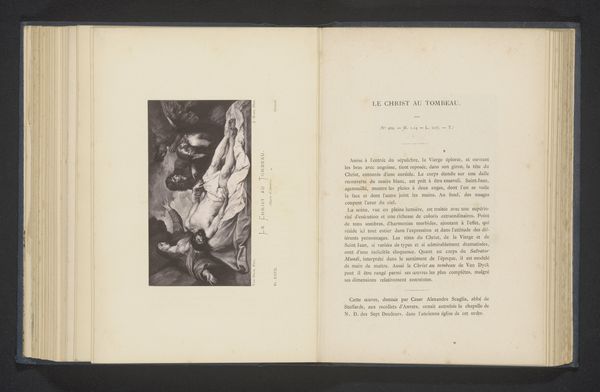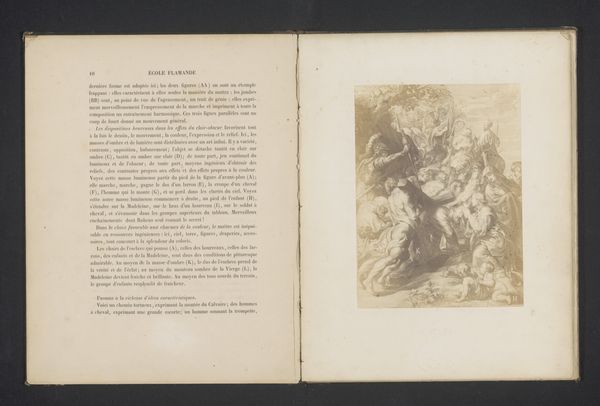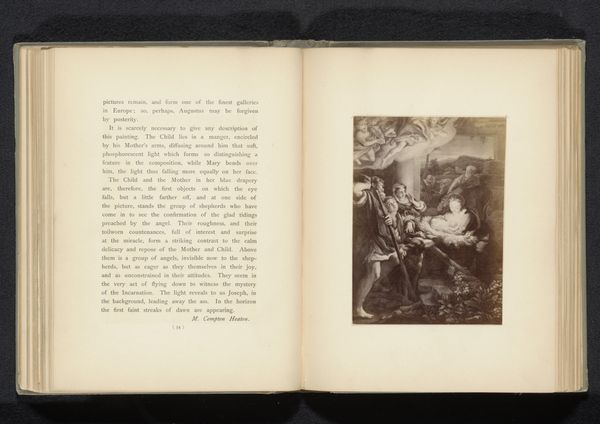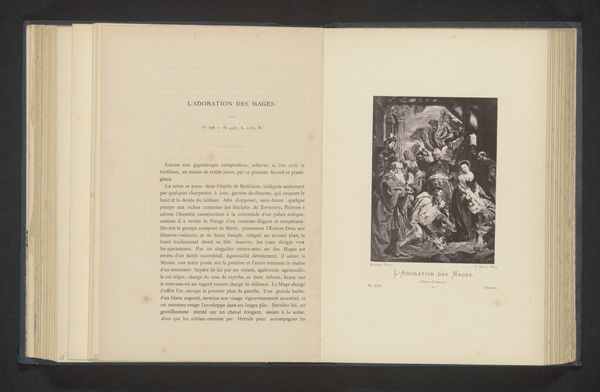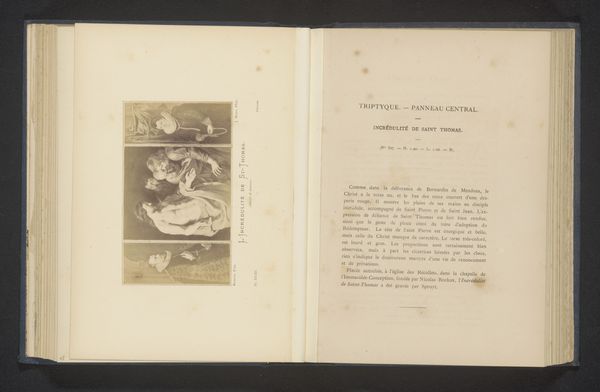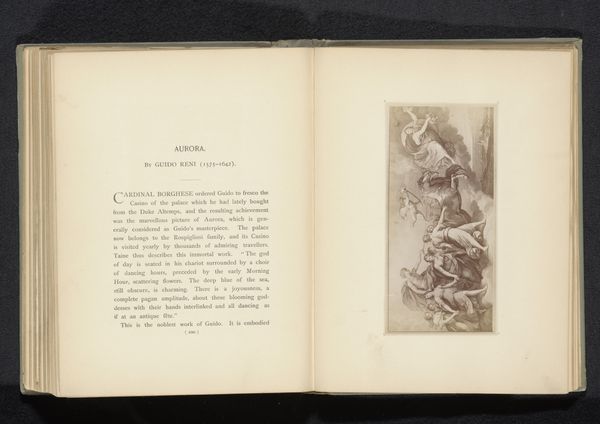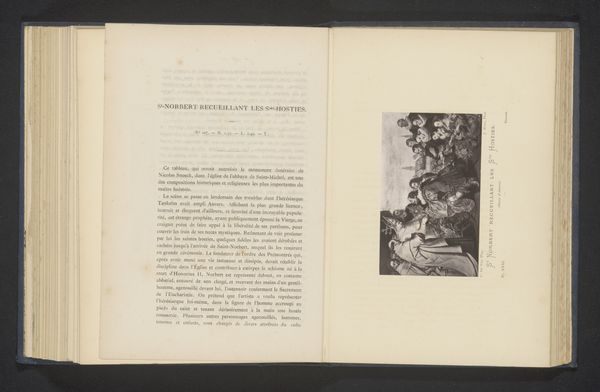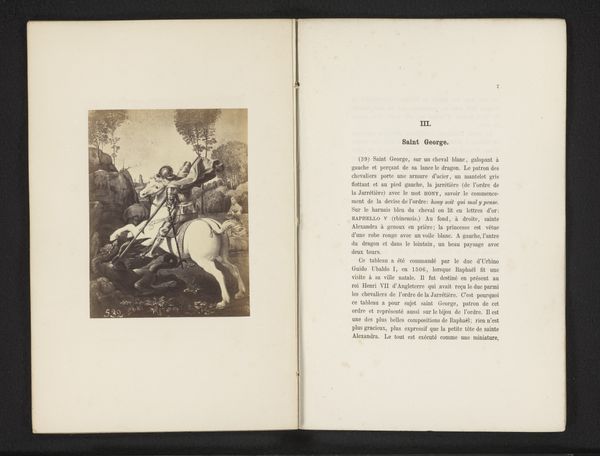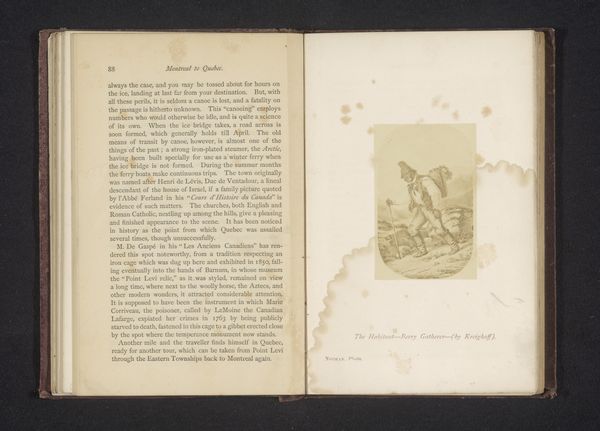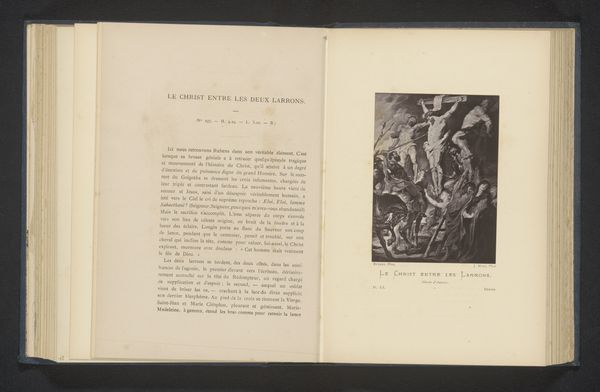
Fotoreproductie van een prent naar een schilderij, voorstellende de Madonna van de heilige Hiëronymus before 1887
0:00
0:00
print, photography
#
neoclassicism
# print
#
landscape
#
11_renaissance
#
photography
#
history-painting
#
italian-renaissance
Dimensions: height 128 mm, width 89 mm
Copyright: Rijks Museum: Open Domain
Curator: We’re looking at a photographic reproduction, made before 1887, of an earlier print depicting a painting known as “The Madonna of Saint Jerome.” Editor: It feels muted, like a memory viewed through layers of time and artistic mediation. There's a softness, despite the formality of the Neoclassical style I see here, perhaps due to the photographic process. Curator: The image resonates with familiar iconographic cues – a serene Madonna, an elderly St. Jerome – invoking themes of divine motherhood, scholarly dedication, and, importantly, legacy. We should note the significance of these visual emblems during a period of substantial social change. Editor: Agreed. Considering it’s a reproduction of a print of a painting, the chain of production interests me. What does it mean to create and circulate images of venerated subjects through mass media like photography in the late 19th century? Was this about democratizing access, or something else? Curator: It certainly provided broader access. Prints allowed for the wider dissemination of important images but a photographic reproduction offers a new level of ‘authenticity,’ promising a mechanical record closer to the source painting. That could impact perceptions of truth and value. Editor: Interesting. But what is gained or lost through the photographic rendering? We’re looking at an interpretation of an interpretation, each stage influenced by the technologies and ideologies of its time. The artist, the engraver, the photographer—each contributes to the final image we see. Curator: I think it adds to a broader story around how archetypes persist, how society grapples with images that embody their values and history across evolving media. The image of the Madonna resonates even here in monochrome. Editor: I can appreciate how these reproduction methods made such images available to a wider audience, almost commodifying spiritual imagery for mass consumption, let's call it spiritual branding, and how that impacts cultural capital. Curator: That interplay, between sacred representation and mass production, leaves an enduring mark. Thank you. Editor: Absolutely, thinking through how art’s meaning shifts as its mode of production transforms is something that's key for the historical record.
Comments
No comments
Be the first to comment and join the conversation on the ultimate creative platform.
